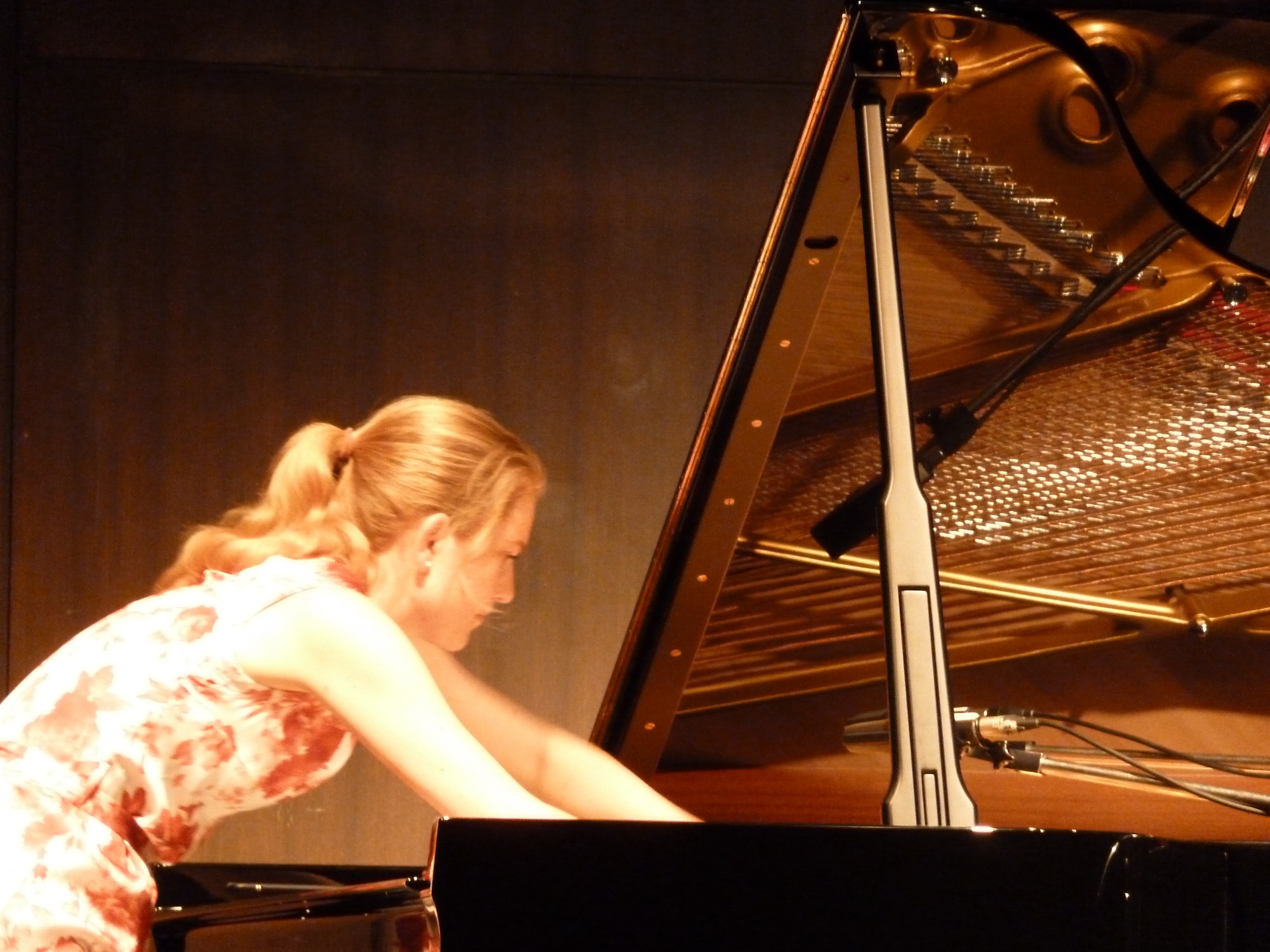My 40-minute algorithmic composition for piano and computer came out on the Aural Terrains label this month. Rei Nakamura premiered it in London (partial version) and Stockholm (complete version) in 2012. Karin Schistek played it in Bangkok, Trento (Italy), and Edinburgh before we took to the Reid Studio to record it on March 3rd 2013. Booklet text below.
Without wishing to appear esoteric, boastful, or holier-than-thou, it’s relevant to the reception and contextualisation of this piece to point out that it would have been impossible for me to write it without years of practice of Vipassana (Insight) meditation. In contrast to most of my music, the piece is very slow and calm. Depending on the length of the pauses, it lasts a total of 35-40 minutes; there are however possible stopping points at 15 and 21 minutes along the way. It demands extremely quiet playing from the pianist almost all the way through, thus putting the piano back into the pianoforte you might say.
That Rei Nakamura–for whom this piece was originally written–could carry off virtuosic, fast, complex music was made clear to me in a couple of projects we have done together recently; hence the perhaps counterintuitive response–or challenge even–represented by this soft, gentle meditation on the piano’s resonant properties. The title, with its image of a gentle woodland creature, is meant ironically–again: as a challenge–not in a new-agey manner.
The skill demanded of the pianist consists amongst other things in very accurately playing together the notes of each of the quiet chords, in order to properly fuse the sonorities; playing evenly, so as not to disturb the sense of line and serenity; and, perhaps diametrically opposed to the latter, the subtly different colouring and shading of isolated notes and chords in different registers, to place them spatially and create variety in an otherwise dynamically and rhythmically rather uniform piece.
PS: For the geeks amongst us: This piece was created with my slippery chicken algorithmic composition software. It is conceived in four voices: one for each of the pianist’s hands, and another two for the high and low voices of an analogue synthesis emulation played back from the computer and mixed with various other sound files (some algorithmic, some ambient) in four channels. Essentially there are three nine-bar phrases in 4/4 meter, each in four part counterpoint. The assignment of contrapuntal parts to each of the four voices (computer high/low, piano left-hand/right-hand) is determined by a permutation routine in which there are 24 possible permutations of the four voices. The selection of which of the three phrases to use is also decided by a partially repeated permutation (there being only six possible permutations of three items). Inserted into these longer phrases are an ever increasing, ever more frequently recurring set of shorter repeating bars, each of which is extracted from the longer sequences. Where these repeats are inserted is determined by a Fibonacci-based transition algorithm; the number of repeats by a sequence of ascending prime numbers (3 5 3 5 7 11 7 13 11 13 17).
The harmonic material was created by ear. There are twelve chords, or harmonic sets, which may or may not be used by the algorithm in their entirety–either linearly or vertically–during one rhythmic sequence. The determination of which chord(s) can follow which was also determined by ear, and a varying but internally consistent linear sequence extended algorithmically from this. (In fact, chord nine is missing in this piece, not so much by design as by algorithmic coincidence.) The harmonies are transposed by a minor third during the second half of the piece.
Update October 2014: We got a nice review by Julian Cowley in The Wire (issue 368: October 2014)
Edinburgh based composer Michael Edwards wrote this music for pianist Rei Nakamura. It is a luminous and meditative duet with computer software, designed to emphasise the piano’s resonant properties and, in the process, to set a challenge of balance and restraint to a performer known for her dynamic virtuosity. On this recording the piece is executed with the required poise and sensitivity by Karin Schistek, an associate of Edwards from the improvising group Lapslap. The slow unfurling of For Rei As A Doe is even and steady, but Schistek’s nuanced colouration of individual notes and chords, and the variable pulsation of the digital halo that radiates around her performance, bring an absorbing source of interest to the music’s cool progress.
There’s also a Czech review, a review in English in the Italian magazine Neural, a Squid’s Ear review, and an All About Jazz review (of all things).


Leave a Reply